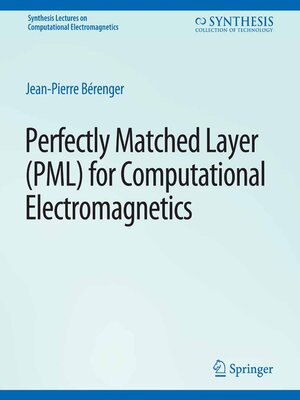Perfectly Matched Layer (PML) for Computational Electromagnetics
ebook ∣ Synthesis Lectures on Computational Electromagnetics
By Jean-Pierre Bérenger

Sign up to save your library
With an OverDrive account, you can save your favorite libraries for at-a-glance information about availability. Find out more about OverDrive accounts.
Find this title in Libby, the library reading app by OverDrive.



Search for a digital library with this title
Title found at these libraries:
| Loading... |
This lecture presents the perfectly matched layer (PML) absorbing boundary condition (ABC) used to simulate free space when solving the Maxwell equations with such finite methods as the finite difference time domain (FDTD) method or the finite element method. The frequency domain and the time domain equations are derived for the different forms of PML media, namely the split PML, the CPML, the NPML, and the uniaxial PML, in the cases of PMLs matched to isotropic, anisotropic, and dispersive media. The implementation of the PML ABC in the FDTD method is presented in detail. Propagation and reflection of waves in the discretized FDTD space are derived and discussed, with a special emphasis on the problem of evanescent waves. The optimization of the PML ABC is addressed in two typical applications of the FDTD method: first, wave-structure interaction problems, and secondly, waveguide problems. Finally, a review of the literature on the application of the PML ABC to other numerical techniques of electromagnetics and to other partial differential equations of physics is provided. In addition, a software package for computing the actual reflection from a FDTD-PML is provided. It is available here.






